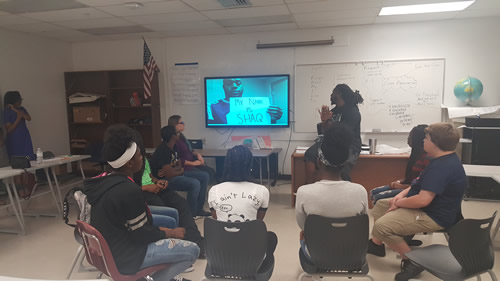When Robert Runcie became superintendent of Broward County (FL) Public School District (BCPS) in 2011, he faced more than academic challenges. As the sixth-largest school district in the country, serving over 275,000 public and public charter school students, BCPS boasts an extremely diverse student population representing over 200 countries and over 190 languages.
The diversity of our student population was not reflective of our teaching staff, which created challenges for students and educators. In addition to developing strategic approaches to improving graduation rates and academic outcomes, Superintendent Runcie saw an opportunity to address racial disparities and outcomes for students of color and take on the challenge of improving equity and conversations around race.
Bridging the equity divide and addressing cultural responsiveness
Seven years later, our Department of Equity and Diversity has graduated our first cohort of equity liaisons, 300 educators across the district who volunteered to champion their professional learning experiences among their individual schools. Their work has resulted in widespread impact for the teachers as well as the students and the community. The success of this initiative was built on three core pillars.
1. Success must be driven by a district-wide initiative
Realizing that a focus on equity is paramount to improving outcomes for BCPS students, eight years ago the district committed to formalizing an initiative to change how educators engage with students to reflect a more culturally responsive school system.
The work we had been conducting was decentralized, based on individual school requests for equity training, but there had been no systematic delivery process until last year when we partnered with PCG Education (PCG), a leader in research-backed online professional development programs.
Using PCG’s Courageous Conversations about Race online course, developed in partnership with renowned equity expert Glenn Singleton of Courageous Conversations, we were able to rigorously train 300 equity liaisons through an asynchronous online platform that allowed educators to learn at their convenience. The three-month training included digital tools, resources, coaches, and a collaborative online community to share, reflect, and implement best practices.
The outcomes were significant. Ninety-four percent of participants successfully completed the program, and these equity liaisons have developed equity plans that are currently being rolled out to the teachers in their school. Plus, the district-wide initiative resulted in additional grant funding that allowed us to create and implement a plan to extend equity and social-emotional professional development to additional educators and administrators across all BCPS schools.
Related: Stop! Why the mis-definition of student equity needs to end
But most important, by initially defining our mission to address the educational and opportunity gaps facing students based on their socioeconomic standing, race, gender, ethnicity, language, or disability, we were able to codify the measures needed to develop the district’s strategic plan, which ensures that our executive leadership has a common vocabulary about equity, aligned on guiding principles. All stakeholders need to be onboard with goals for systemic professional development to effect change.
2. Teachers must own the work—and the outcomes
Oftentimes, district-wide initiatives are rolled out from the top-down. However, when we began last year’s equity training, we partnered with the Broward County Teachers Union to develop and implement the plan. We wanted to empower our teachers to participate in the initiative and to take ownership of their process. The bottom-up approach ultimately led to more passionate educators that wanted to share their excitement with their principals. After completing Courageous Conversations about Race, the equity liaisons are implementing the second stage of their equity plans, training their principals, administrators, and other teachers in this important work.
3. Incentivize the efforts
Through the grant we were awarded, we were able to offer a small stipend to the equity liaisons who participated in the PCG course, which can be used to extend their training into their own schools.
In addition to a stipend, districts can incentivize trainings by using an accredited content provider to allow teachers to receive professional learning credits. That said, many of our equity liaisons reflected that they would have participated even without the stipend. In this case, teachers recognized the importance of the learning opportunity to bridge the equity divide not only for themselves, but for our students and the community. Furthermore, after taking the online course, we had numerous teachers re-enroll in school in a masters or doctorate program. Nearly 98 percent of participants found this course to have a major or moderate effect on their professional learning. This initiative inspired them to extend their own understanding of equity and want to dig even deeper.
We’ve reached our short-term goals but there’s more work to be done. The good news is that, after taking the Courageous Conversations about Race course, 93 percent of the teachers felt extremely comfortable having difficult conversations about race on a daily basis, an increase of nearly 20 percent. We are making small strides that have long-term positive impact our students and community by making schools a safer place for our diverse student population.
- How video coaching inspires teacher self-reflection - April 15, 2024
- Is it the school, or the students? - April 15, 2024
- Using tech to drive innovation in early care and education - April 12, 2024

